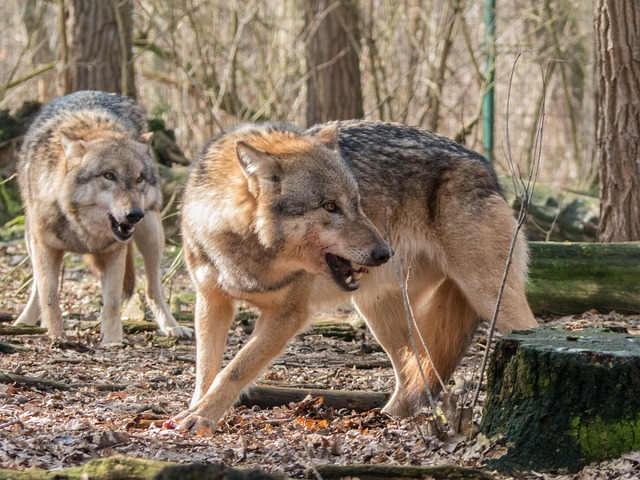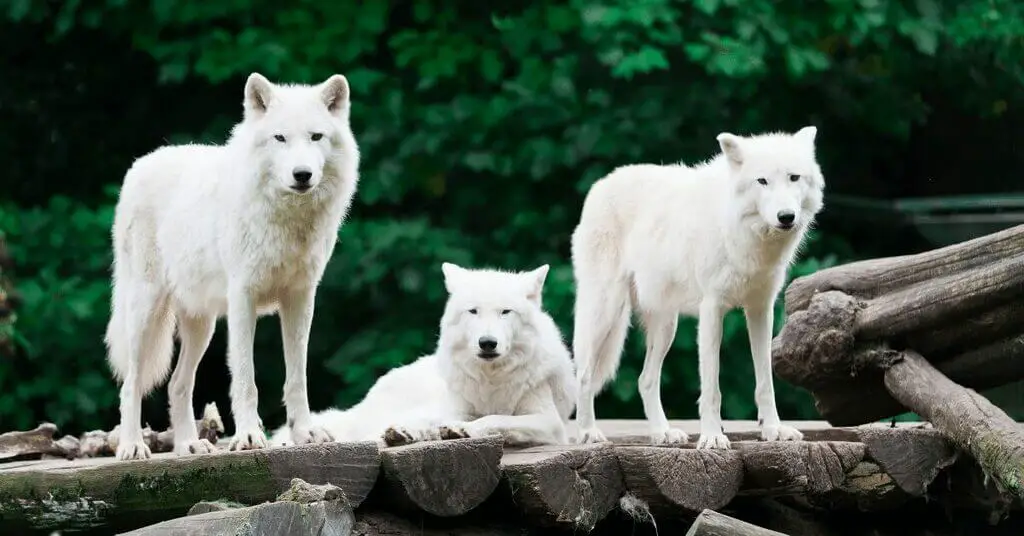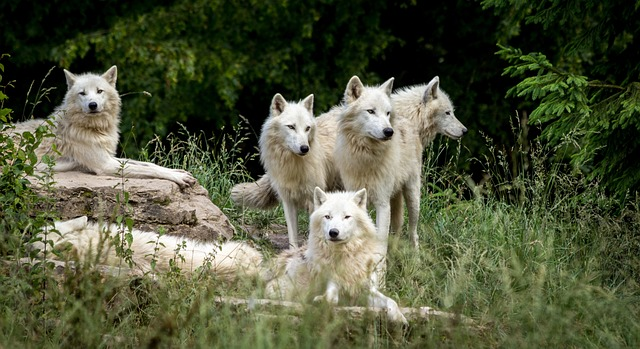Wolves are fascinating creatures, known for their complex social structures and unparalleled survival instincts. But what truly sets them apart from other animals? Understanding the characteristics of a wolf can be both intriguing and enlightening.
One of the most striking traits of a wolf is its pack mentality. Wolves are highly social animals, relying on cooperation and communication within their pack to hunt, defend territory, and raise their young. However, this strong bond also highlights a critical challenge—they can struggle to survive alone.
Another key characteristic is their adaptability. Wolves thrive in diverse environments, from the icy tundras to dense forests, yet this adaptability also raises concerns about their vulnerability to human encroachment.
Did you know that a wolf’s sense of smell is 100 times more powerful than that of a human? This ability plays a vital role in their hunting strategies and survival.
In this discussion, we’ll explore these traits in depth, address common misconceptions, and offer insights into what makes wolves such unique and resilient animals.

Wolf Characteristics & Behaviour

Distribution and Habitat
Wolves habituated in North America, Europe, and Asia, with some subspecies living in Africa. They tend to inhabit remote areas such as mountainous regions and forests. Wolf packs can make their homes in a range of terrain from deserts to tundra.
Wolves habituate places with plenty of prey and low human disturbance, but some have adapted to living near people in suburban areas.
The wolf population has decreased in recent years due to human-related causes such as habitat destruction and human-wolf conflicts. Wolves have been reintroduced into many parts for restoration purposes.
Wolf Diet
Wolves are predatory animals that primarily feed on large ungulates, such as deer, elk, moose, and bison.
Wolves diet includes smaller mammals, including rabbits, beavers, mice, and voles. In addition to this mammalian prey, they eat birds, fish, reptiles, and insects.
Wolves hunt larger animals in the winter and smaller ones in summer when food supplies are scarce. Wolves have also been known to scavenge carcasses left behind by other predators.
Wolves use whiskers, highly sensitive hairs to detect changes in their environment, navigate through dark forests, and hunt more effectively.
Their stomach has the capacity to consume 20 to 25 pounds at a time, as well as can survive without food for more than 2 weeks or even more in shortage of food.
This opportunistic behavior of feeding allows them to adapt to changing environmental conditions. Even in certain circumstances, they turn into omnivorous or herbivorous.
Wolf eats grasses when they have stomach problems, as it helps them to excrete unhealthy food through puke.
Reproduction and Mating Process
Wolves mate for life and typically live with one partner for their entire life. The breeding season usually takes place between late January and March.
During this period, a male wolf becomes vocal and active in attracting a mate. Courtship behaviors include howling, touch, play fighting, and scent marking.
Wolves can reproduce once annually and give birth to an average of six pups. Their gestation period remains 60 to 63 days, after which their pups are born.
Although the female wolf is solely responsible for nurturing and caring for their litter, the male plays an important role in protecting, hunting food, and helping to build a den.
Once the wolf pups are born, both parents are responsible for teaching them life skills such as hunting and socialization.
Wolves can live up to 13 years in the wild, although their lifespan is often shorter due to hunting and habitat destruction.
Wolf’s Behavior

Wolves are highly social animals and live with their entire pack. They communicate through vocalizations, body language, and scent markings.
A wolf Pack’s members participate in hunting, care for their young ones together, and even play with one another.
Wolves also have a hierarchical structure within the pack that is maintained through displays of dominance and submission.
Wolves show strong family bonds and can be very loyal to their pack mate, often interacting in playful ways with their pack. These all are aspects of a wolf personality.
Despite myths about them being dangerous or over-aggressive, wolves are generally shy animals who spend most of their time avoiding human interactions.
Wolves have unique sleep patterns that are closely linked to their social structure and daily activities. Typically, wolves sleep in short bursts throughout the day and night, often during the quieter periods when they are not actively hunting or engaging in social interactions.
Predators and Threats
Wolves have a few natural predators, including bears, Siberian tigers, and grizzly bears. However, these animals are predatory animals and top predators on the food chain.
Attacks on wolves are rare, as the cause of attacks on wolves is wild, mainly on land.
Humans are also a threat to wolves, as they hunt them for meat, sport, and many other reasons.
Wolves that live close to human populations are more likely to come in contact with people, which can lead to conflict. Humans kill wolves for their fur or to protect livestock.
Additionally, wolves are losing their natural habitats due to human activities such as land development and logging. Wolves require large areas and open spaces to survive.
If these essential elements of their habitat are disturbed or destroyed, wolves become more vulnerable to predators and other threats.
For the wolf population to remain healthy, humans must take steps to ensure their habitats are protected.
The conservation of wolf populations is important for healthy ecosystems, as wolves play a vital role in maintaining balance within nature. By preserving their habitat and coexisting with humans, wolves can continue to thrive.
4 Interesting Facts about Wolves
Wolves are monogamous
Wolves are highly social wild animals and communicate using body language, vocalizations, and scent marking with their own and other pack members. Mating season for wolves typically occurs from January to March.
An alpha male and a female wolf pair bond for life. However, if a mate dies, the wolf may take another mate once after recovering from the grief.
During mating season, they become increasingly active while searching for a mate at night.
A wolf can usually find a mate within its pack. However, if none are available, they will travel to another pack in search of one.
When two wolves decide to become mates, they stay together and help raise their pups until the next mating season, when they part ways.
Wolves are incredibly loyal and strong creatures who put family first and can sacrifice their lives to keep their mates safe.
Their Vocal and Nonvocal Ways of Communication
Wolves are incredible creatures that communicate both vocally and non-vocally. Wolf’s vocal communication includes growls, howls, barks, whines, and yips. Wolf uses vocalizations to mark territory, attract mates, and teach young pups.

Nonvocal communication between wolves is just as crucial for their social interaction and includes body language, physical contact, and scent marking.
Wolves communicate their emotions through their posture, facial expressions, tail movements, and the positioning of their ears.
Through physical contact, such as nuzzling or touching noses, wolves can show affection. Scent marking is another way for wolves which they use to identify members and mark their territories.
Wolves are social animals, and vocal and nonvocal communication help them maintain strong pack bonds.
Alpha Male and female wolves are breeders, not leaders.
Have you ever thought about how the concept of an alpha wolf came?
In 1947, researcher Rudolf Schenkel published about the social structure and body language of Wolves.
He observed and studied the 10 wolves captivated in the Basel Zoo in Switzerland. He stated that the highest-ranked alpha female and alpha male mate in wolves, and the hierarchy system could be changed.
He wrote that “by constantly controlling and suppressing all types of competition within the same sex, both ‘alpha animals’ maintains their social position,”
After this, another researcher, David Mech, mentioned that Schenkel presented the concept of the alpha wolf in a pack, as per the international wolf center.
They Are the Largest Members of the Canidae Family
Wolves, recognized as the largest members of the Canidae family, exhibit notable variation in size across different subspecies. Typically, an adult wolf’s size is between 105 to 160 cm (41 to 63 inches) in length, excluding their tails, which contribute an additional 29 to 50 cm (11 to 20 inches). Standing at about 80 to 85 cm (31 to 33 inches) at the shoulder, wolves possess a robust and muscular frame.
Male wolves generally weigh around 40 kg (88 lbs), while females average slightly less at 37 kg (81.6 lbs). However, some wolves, particularly those in certain regions, can weigh as much as 79 kg (175 lbs). This substantial size, coupled with their powerful jaws and long legs, equips them well for hunting and moving efficiently through various environments, from forests to tundras.
In summary, wolves are the largest and most formidable members of the Canidae family, with their size, strength, and adaptability contributing to their success as apex predators.
Conclusion
Gray wolves are highly intelligent animals with interesting characteristics. There are around 200,000 to 250,000 wolves in the world.
Wolves live in packs of four to nine wolves, in which only an alpha male and female mate with each other and give rise to 4 to 6 pups per litter. With this, they use various vocals and non-vocals to communicate with other wolves.
They are primarily carnivorous animals that feed on large ungulates such as bison, deer, elk, and moose.
Moreover, attacks on wolves are rare, as they are top predators and predatory animals.
Additionally, they are monogamous, which means they mate with one partner for life. Lastly, the concept of alpha wolf arrived from some experimental research, which different researchers further studied. Check out the video below for more about the wolf’s characteristics.
Frequently Asked Questions
What does a wolf symbolize?
A wolf symbolizes guardianship, loyalty, and intelligence. It also represents strong instincts and the ability to make quick, effective decisions. In many cultures, wolves are seen as noble guardians that embody both freedom and community spirit.
What is the personality of a wolf?
Wolves are highly intelligent and social animals. They exhibit strong family bonds, are caring and devoted pack members, and use sophisticated communication methods. Despite their fierce reputation, they are generally cautious and shy around humans.
What are 8 interesting facts about wolves?
Their 8 interesting facts about wolves are they mate for life, have 4 to 6 pups per litter, pups are born deaf and dumb, a pack of wolves includes 2 to 30 wolves, a wolf can run up to 36 to 38 Mph, they can smell miles away, and they can jump high in the air.
How loyal are wolves?
Wolves are the most loyal animals.
What are 5 interesting facts about wolves?
Wolves can run up to 38 mph, communicate using complex vocalizations, are monogamous often mating for life, can eat 20 pounds of meat in one meal, and play a crucial role in their ecosystem by controlling prey populations.
- What Should I Do If A Koala Bites Me? Safety Guide - 2024-05-30
- Are Kangaroos Born Without Hind Legs? A Fascinating Journey - 2024-05-30
- Animals That Look Like Squirrels - 2024-05-30








